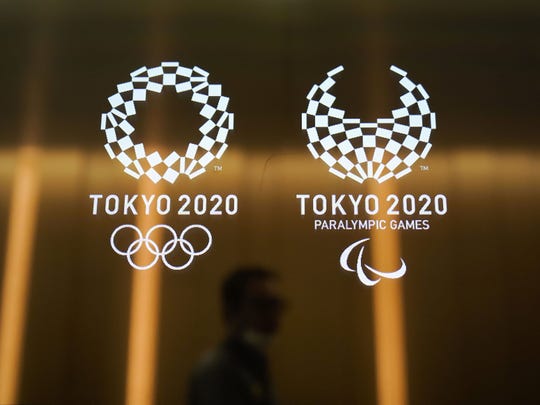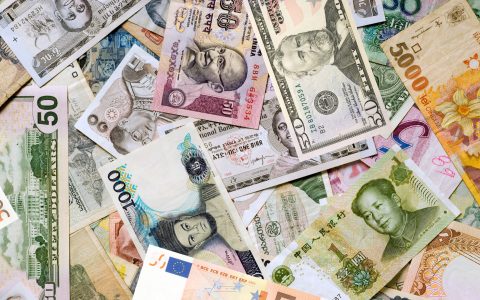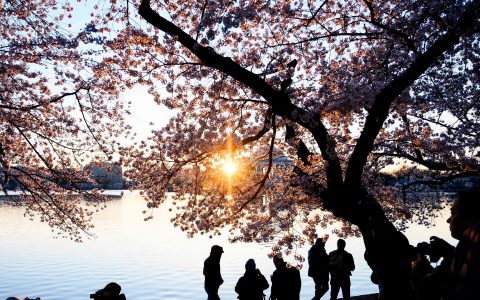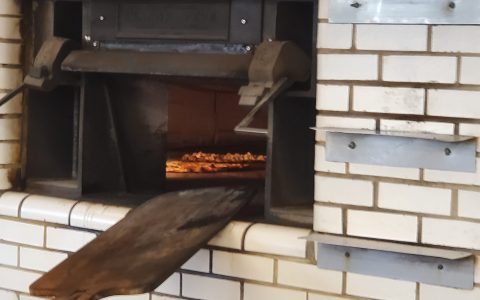
U.S. Olympic skateboarding hopefuls Tom Schaar and Brighton Zeuner discuss how skateboarding debuting in the 2020 Olympics will help grow the sport.
Max Schreiber, USA TODAY
The Tokyo 2020 Olympics are almost here – and if you’re going to the games next summer, or simply want to soak up the Olympics-tinged atmosphere, you should start planning your journey.
You probably have a lot of questions. Where should I stay? When should I book my flights? What is there to do while I’m in Tokyo? What is there to do outside of Tokyo? What is the weather going to be like? But no need to fret, dear travelers: We’re here to answer everything we can.
Here’s a guide to all your Tokyo-related travel questions ahead of the 2020 Olympics:
When are the 2020 Olympics?
July 24 to Aug. 9. U.S. travelers can still get a ticket, but only as part of a package. CoSport, the U.S. Olympics tickets retailer, is sold out of individual tickets but is waiting to see if it will receive more. You can sign up for their email list. Packages are available on its website that include tickets and hotel accommodation. One cheaper price, for a doubles trip, is $4,471.50 per person (for a three-night, four-event package from July 27-30).
But you might want to hurry up: “Packages are still available but are running scarce,” Patricia Sweeney, a CoSport customer care associate told USA TODAY in an email.
.
With under a year to go, we look ahead to the 2020 Summer Olympics in Tokyo.
Sandy Hooper, USA TODAY
When should I book flights for the Tokyo Olympics?
There are always deals to be had, according to Darci Valiente, a U.S. flight searcher for Scott’s Cheap Flights. Valiente recommends booking at least six months in advance. “Because it’s for the Olympics, prices will be even more expensive than they already are for peak travel season,” Valiente told USA TODAY.
Catherine Heald, CEO and co-founder of Asia tour operator Remote Lands, recommends travelers fly into Haneda Airport as it’s closest to the city center. Tokyo’s other airport is Narita International Airport.
How much should people expect to pay? Valiente recommends looking for flights under $800, depending on where they are in the U.S. (i.e. if you’re leaving from California, go for under $700).

The Tokyo 2020 Summer Olympics are almost here. You should start planning your journey. (Photo: The Associated Press)
And don’t necessarily set your sights on flying directly into Tokyo. “We saw flights to Osaka for peak summer more (numerous) than Toyko – so be flexible about where you fly into and consider taking the train,” Valiente says.
Right now, flight prices are more expensive if you want to be in Tokyo for the first few days of the games and the opening ceremony, according to Valiente. The prices drop in the middle to the end of the games. Travelers looking to make a 10 to 14-day excursion may want to stagger their journey so they either arrive early and leave in the middle of the games, or arrive in the middle of the games and depart post-Olympics.
Where should I stay?
Travelers have a number of options, including opting for a nearby city like Yokohama, which Amy Tadehara, a senior travel consultant at Inside Japan Tours, refers to as “Tokyo’s cosmopolitan younger sibling.” Hop on a train between the two in less than 40 minutes.
Edward Granville, chief operating officer at luxury travel company Red Savannah recommends booking with one of the event’s official travel partners and says that the best hotels usually give up their inventory to these groups.
“Despite a construction book in preparation to the Olympics, Tokyo is looking at a massive accommodation shortfall,” Japan event travel expert Alan Omlin and long-time Tokyo resident says. The Mizuho Research Institute points to a 14,000-room shortfall for the city.
Airbnb has a significantly reduced presence in the city thanks to a law restricting Airbnb rentals.. Michael Matsuo, a spokesperson for Airbnb, said some hosts haven’t made their calendars open to book during that period yet – though a search during the Olympics period for one guest warranted more than 300 places to stay, varying wildly in price per night.
If you decide to book a hotel, know that most Japanese hotels don’t let more than three (or even two) people in one room. Rooms are also more expensive, according to Goldberg. “In fact, all Japanese-style accommodations charge per person and not per room,” Goldberg says.
Chef Hiroki Odo, owner and chef of o.d.o by ODO, the speakeasy kaiseki restaurant located in New York’s Flatiron neighborhood, recommends travelers stay at a ryokan (traditional Japanese inn).
From hiking trails near Mount Fuji to interacting with exotic creatures, Tokyo, Japan is full of adventures.
USA TODAY
Shibuya Crossing
Who knew a crosswalk could also double as a tourist attraction? But Shibuya Crossing isn’t just any crosswalk. It could be the world’s busiest, according to Lonely Planet, noting that at peak times upwards of 3,000 people cross at a time. It’s a scramble intersection, which means all vehicle traffic is stopped to allow pedestrians to cross in every direction, including diagonally, at the same time.
Mount Fuji
Although Mount Fuji technically isn’t in Tokyo, it’s just a short car, bus or train ride to the active volcano, which is also Japan’s tallest mountain. Visitors can explore trails there from early July to early September.
Animal cafes
Tokyo has developed a worldwide reputation for its animal cafes. In addition to getting food and drink, visitors to the cafe are treated to interaction with cute, tame animals, such as hedgehogs, meerkats and ferrets. It’s a dream come true for animal lovers.
First time in Tokyo? Here are 5 things you should do
Other notable sights
Takao Nishina, travel agency GetYourGuide’s regional manager for Japan, recommends the Tokyo Skytree, the tallest broadcast tower in the world, as well as the Ghibli Museum for animation fanatics and the Samurai Museum.
What else should I do near Tokyo?
Hakone: “Tucked up in the mountains, it’s a beautiful hideaway with a gondola that goes up into the mountains and a boat ride tour that sails the gorgeous Ashino Lake,” Jay Allen, the publisher of website Unseen Japan, told USA TODAY. Tadehara from Inside Japan Tours says that Hakone’s elevation is a pleasant break from Tokyo’s summer heat.
Kyoto: Travelers can take a bullet train to “the cultural heart of Japan,” Tadehara says. Nearly 2,000 temples and shrines are scattered in the city.
Osaka or Hiroshima: Tadehara adds that you can take a day trip to see foodie haven Osaka or even Hiroshima, where the first atomic bomb dropped.
Yokohama: Check out Minato Mirai, a portside area that has “spectacular fireworks” in the summer, according to Allen.
Kamakura: Go here to see Komachi-dori, “a rich shopping section filled with small shops and restaurants; the Great Buddha of Kamakura at the Kotoku Temple, which has been preserved from the 13th century until today; and the oceanside shoreline of Kamakura, which offers spectacular sunsets,” Allen says.
Anything else I should keep in mind?
“One of the greatest misconceptions about Japan is that it can be unapproachable and difficult to navigate effectively because of the language barrier and cultural formality,” Tadehara says. “Though it is true that English is not as prevalent here as it is in other non-English speaking countries, getting around and immersing in authentic experiences is easy with a little preparation.”
Getting around
The city is easy to get around via public transportation, though taxis are an affordable option. “Taxis are easy to get, most take credit cards, and they can be used affordably for short distances within a neighborhood,” Goldberg says.
Contributing: Savannah Brock, Julia Thompson
Read or Share this story: https://www.usatoday.com/story/travel/destinations/2019/09/24/olympics-2020-tokyo-summer-travel-guide/2355577001/



